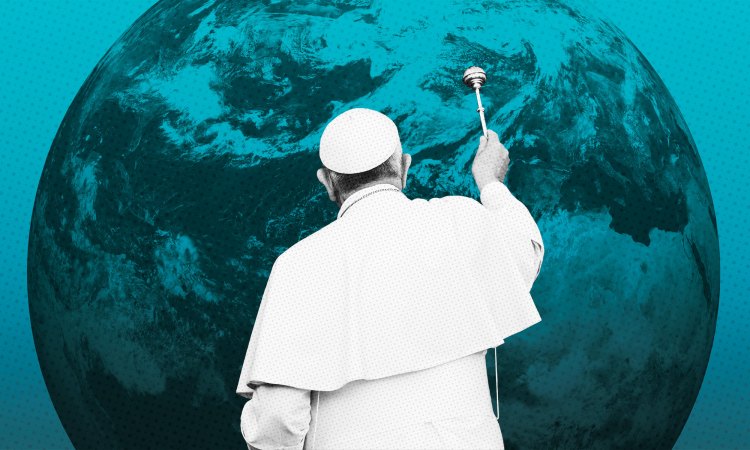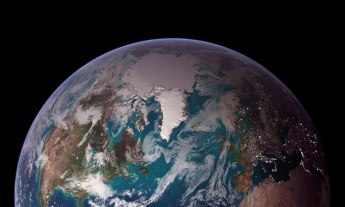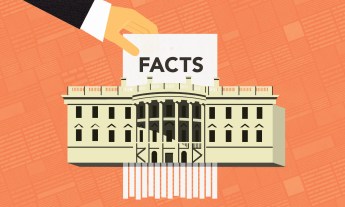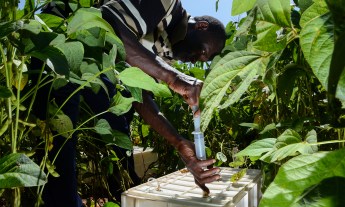
Pope Francis’ recent Encyclical has been widely praised for supporting the science on climate change. As Johan Rockström, who’s been involved in high level discussions between scientists and the Vatican explains, the story of how the Pope has integrated science and religion represents an important shift.
On June 18, 2015, Pope Francis issued the encyclical Laudato Si: On care for our common home. The letter has been widely praised for supporting the science on climate change. But it goes much further than many expected in documenting the phenomenal changes that our planet is undergoing, beyond climate. And the story of how the Pope has integrated science and religion (not always the easiest of companions, let’s face it) indicates, to me at least, a profound shift in world view.
The Pontifical Academy of Sciences has been bringing together climate scientists, economists and scholars pretty much since Francis’ papacy began in March 2013. My colleagues, professors Paul Crutzen, Veerabhadran Ramanathan and John Schellnhuber, have been part of a new level of dialogue between Earth system scientists and the Vatican. In April of this year, I attended a one-day scientific workshop on the moral dimensions of climate change and sustainable humanity.
At that workshop, which included economist Jeffrey Sachs and Sir Partha Dasgupta of Cambridge University, Cardinal Peter Turkson reminded us that “we are traversing some of the planet’s most fundamental natural boundaries.”
Turkson was using language referring to research on planetary boundaries led by my group, the Stockholm Resilience Centre, and carried out together with leading global sustainability scientists across the world. First published in 2009 (and updated in a paper for Science in January), our work was initiated by growing alarm at the scale of human influence on Earth. Indeed, humans, predominantly in wealthy nations that consume the most, are now the prime drivers of change in the Earth system. We are altering the carbon, water and nitrogen cycles; we are changing the chemistry of the ocean. Only last week, researchers announced further evidence that we are in the midst of a sixth mass extinction of life on Earth.
Firmly grounded in this science, Pope Francis’ encyclical suggests — in line with our analysis — that planetary stewardship must now be the foundation of our values, beliefs and economic systems. It is a remarkable document on the moral imperative of climate action, as well as a call for a new journey of hope and dignity for all world citizens.
Again, these moral statements are surprisingly well aligned with scientific evidence. There is now mounting evidence that a grand transformation of our economic system will deliver both greater wellbeing for all and a sustainable future.
As several of us at the April meeting pointed out, it is the current economic model, known as business-as-usual — not sustainable transformation — that presents the high-risk path for humanity. Business-as-usual stands little chance of delivering wellbeing to a world of perhaps 9 billion people by 2050. It is only by transforming to a sustainable world that Earth has a chance of continuing to support social and economic development to meet rapidly growing demands for health and wealth. One of the ways to do that is to aim for zero emissions from fossil fuels by around the middle of the century. This is possible; the technology is available and investment in renewables is accelerating.
Pope Francis has made this careful intervention at a critical time. 2015 is unique. In July, world leaders meet to discuss how to finance sustainable development. In September they meet again to agree on 17 global goals for development. And in December, they come together once more to hammer out a climate deal.
In April, the Earth League, a group of concerned scientists which I have the privilege of chairing, released the Earth Statement outlining the essential elements of a climate deal. This has been endorsed by Desmond Tutu and members of the World Council of Churches and Religions for Peace. Religious leaders are mobilizing around these global environmental challenges.
2015 is a once-in-a-generation chance to overcome inertia and chart out a sustainable path for all. The Pope’s intervention adds substantial weight to push for a more positive outcome than previous disappointments. Not least, because the window of opportunity is closing fast.
[vimeo 131133951 w=500 h=281]
Featured photo illustration by Dian Lofton/TED.



















